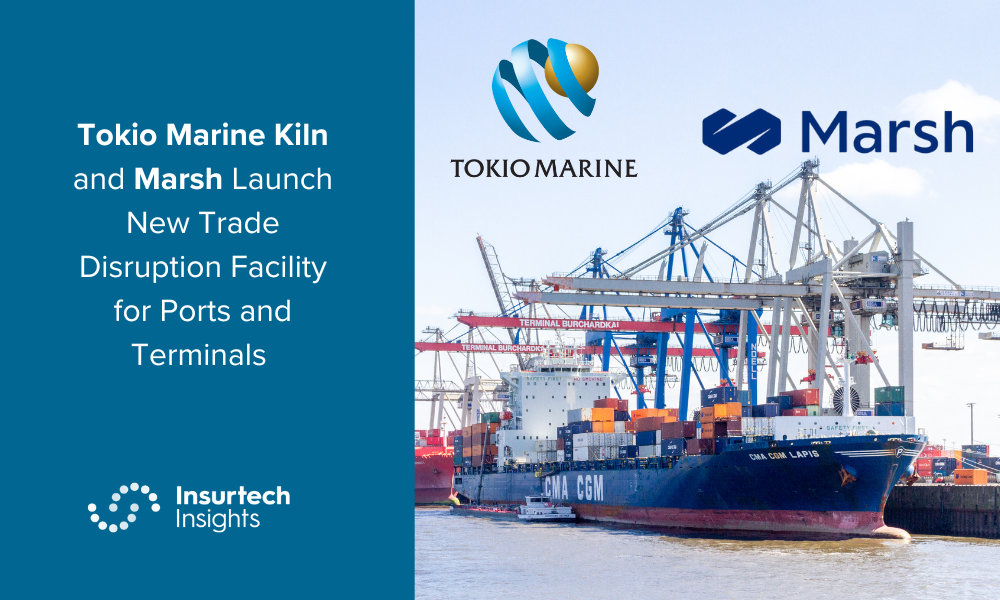Swiss Re’s analysis indicates that a single earthquake in Japan could potentially lead to insured losses ranging from $130 billion to a staggering $150 billion.
Japan, known for its susceptibility to seismic activity, remains a hotbed of earthquake risk. Despite concerted efforts to bolster building infrastructure and implement disaster mitigation measures, the concentration of both population and wealth in Tokyo continues to pose a significant challenge.

As the world’s most densely populated city, Tokyo is home to extensive assets and boasts a well-developed insurance market. This unique combination makes the Japanese capital a potential epicenter for the highest-ever loss globally from a single catastrophic event, according to Swiss Re.
The reinsurer points out that, as recently as 2022, the Tokyo Metropolitan Government estimated a 70% probability of a magnitude 7.3 earthquake striking beneath the city in the next three decades. Such an event could claim as many as 6,000 lives and cause severe destruction to over 190,000 properties.
Swiss Re’s analysis suggests that the cumulative economic loss resulting from direct and indirect damages would amount to a staggering JPY 95.3 trillion, equivalent to approximately $940 billion in today’s currency. This staggering figure is 3.5 times the typical annual total economic loss from all natural disasters worldwide.
Furthermore, Swiss Re’s estimations indicate that insured losses stemming from both residential and non-residential claims could reach an astonishing JPY 13.3-15.2 trillion, or $130-150 billion in today’s terms. This projected financial impact underscores the immense challenges that Japan, and particularly Tokyo, faces in managing the ongoing seismic risk.
As Japan grapples with the ever-present threat of earthquakes, Swiss Re’s analysis serves as a sobering reminder of the need for continued vigilance and preparedness in the face of potentially catastrophic events that could have far-reaching economic and societal consequences.
In a report issued by the insurance giant, Swiss re stated: “It is a testament to these high standards that in 2011, the Mw 9 Tohoku earthquake and tsunami saw relatively low loss of life despite being the strongest-force quake ever to strike Japan, and the fourth-strongest worldwide. Even so, and despite it striking a relatively rural region, economic losses were above USD 280 billion (inflation adjusted), the highest from any natural catastrophe globally since 1970. The event also exposed vulnerabilities, since most deaths and about a third of the economic damage were caused by the follow-on tsunami, which breached preventative seawalls, rather than the quake itself.”
The reports also stated that a substantial portion of the structures within the area predates 1981, marking the last significant revision to the building code. If a significant earthquake were to occur in the Kanto region today, the potential human casualties and economic repercussions could be monumental. The region, renowned for its high population density and substantial asset value concentration (refer to Figure 1), accommodates approximately 39 million inhabitants, a stark contrast to the 1920s when the population was a mere fraction of this number. Moreover, the Kanto region contributed a remarkable 39.3% to Japan’s GDP in 2019, underscoring its economic significance.
It concluded: “In 2022 the Tokyo Metropolitan Government estimated that a Mw 7.3 quake below the city – an event with an expected 70% probability in the next 30 years – could claim 6 000 lives and destroy or severely damage more than 190 000 properties. The estimated economic loss from direct and indirect damages would be JPY 95.3 trillion, or USD 940 billion in today’s values – about 3.5x the typical total economic loss from all natural disasters globally in a year.
We estimate the associated insured losses from residential and non-residential claims at about JPY 13.3-15.2 trillion, or USD 130-150 billion today: the biggest ever single-event loss to the global insurance industry. In Japan, the underwriting risk on earthquake is shared between government and private sectors. Despite Japanese non-life insurance companies’ capital resilience under stringent solvency regulation, earthquake risk in Tokyo remains a major threat that calls for continuous strengthening of worst-case scenario planning and modelling of all loss drivers.”










